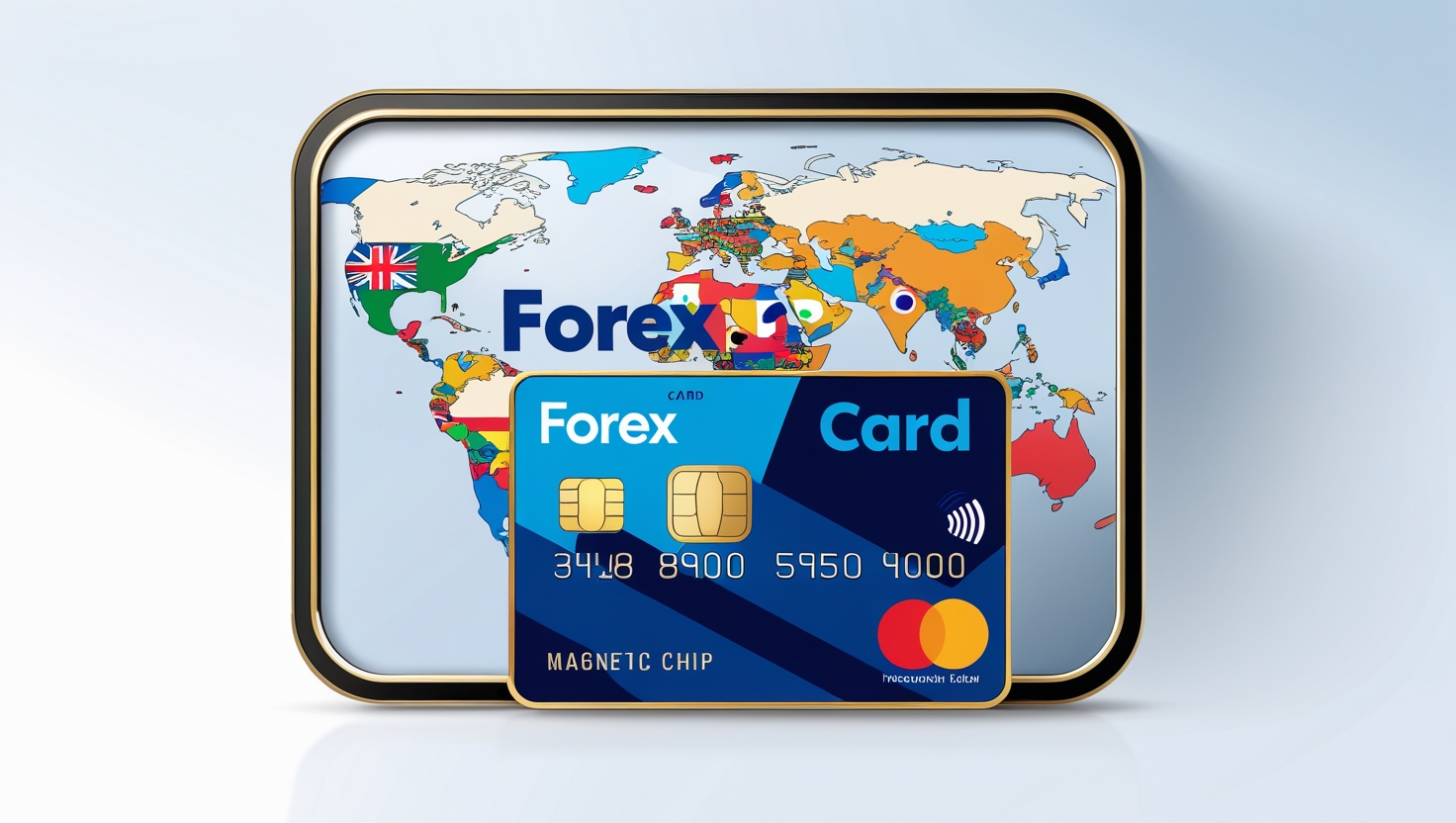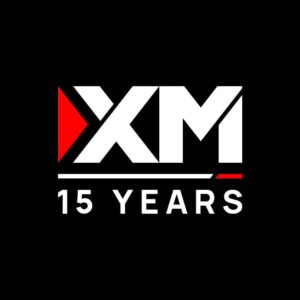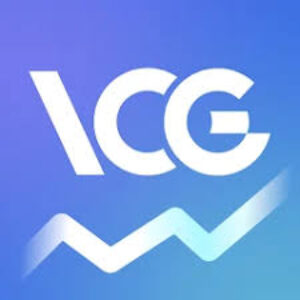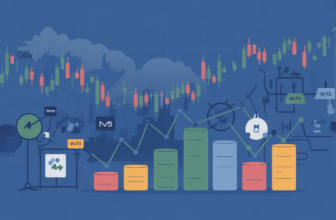
Forex cards—often called travel cards or prepaid currency cards—are essentially reloadable cards preloaded with foreign currency. They function like a debit card abroad, letting travellers pay for goods and services without carrying cash. These cards support one or multiple currencies (for example, USD, EUR, GBP, etc.) on a single chip-enabled card. One big advantage is that the exchange rate is locked in at the time of loading, protecting cardholders from later currency swings. In effect, a Forex card acts like a secure, multi-currency travel wallet on a plastic chip. For instance, Wise (a global fintech) describes a “travel money card” as allowing you to “keep and spend multiple currencies, and use the card while travelling the world”.
Forex cards let travellers load foreign cash and spend safely abroad. Most banks and authorised dealers issue them. One loads the card with the needed currency before departure, and then swipes it for purchases or ATM withdrawals just like any bank debit card. This eliminates the hassle of currency conversions mid-trip. For example, Axis Bank notes you simply “load the required amount of foreign currency” onto the card in the destination currency, then use it “like any other debit card” while travelling. Notably, many such cards support multiple wallets: ExTravelMoney notes multi-currency cards can hold as many as 12 different currencies (USD, EUR, GBP, SGD, AUD, and more) on one card. In practice, when you make a purchase, the card’s chip debits from the correct currency wallet, or automatically converts from another wallet if needed (usually with a small cross-currency fee). This intelligence means you spend the right currency and avoid hidden fees.
Overview: Forex Card
| Aspect | Key Details |
|---|---|
| What is it? | Reloadable prepaid card preloaded with foreign currency that works like a debit card abroad. Supports single or multiple currencies on one chip-enabled card with locked-in exchange rates. |
| How it works | Load foreign currency at a bank/dealer before travel → Use like any debit card for purchases/ATM withdrawals → Exchange rate fixed at loading time → Automatic currency wallet selection for transactions. |
| Supported currencies | USD EUR GBP SGD AUD +7 more Up to 12 currencies on multi-currency cards |
| Key benefits | 🔒 Security: Chip-and-PIN protection, can be blocked if stolen 💰 Cost savings: No 2-3.5% credit card markup fees 📈 Rate protection: Exchange rate locked at loading time 🌍 Global acceptance: Works at 14.5+ million merchants worldwide 📱 Control: Real-time tracking, SMS alerts, online reload |
| Common fees | Issuance: ₹500-₹1000 ATM withdrawal: ~$2 per transaction Reload: ~₹75 per reload Cross-currency conversion: ~3% Balance enquiry: ~$0.50 |
| Usage scenarios | In-store purchases • ATM cash withdrawals • Online payments • Hotel bookings • Restaurant bills • Shopping • Transportation • Digital services |
| RBI regulations | Indian residents can carry up to $3,000 cash for travel. Additional foreign exchange must be via cards, traveller’s cheques, or similar instruments. |
| Best for | Frequent travelers • Multi-country trips • Students studying abroad • Budget-conscious travelers • Those wanting rate protection • Online international payments |
| Top providers | Axis Bank • HDFC Bank • ICICI Bank • YES Bank • SBI • IndusInd Bank • Kotak Mahindra Bank |
How Does a Forex Card Work?
A Forex card works by letting you preload foreign currency at a locked-in exchange rate. Before traveling, one visits a bank or authorised dealer and “loads” the card with the foreign cash needed. You select the currency (for example, US dollars for a trip to the US) and pay the equivalent in your home currency. As Axis Bank explains, once “the money is loaded, you can use the card like any other debit card for transactions in the respective foreign currency”. From that moment, the card’s balance is held in that currency wallet. During travel, swiping the card deducts from the preloaded balance without further conversion.
Because the rate is fixed at load-time, the card provides protection from currency volatility. For instance, once the funds are loaded, you “know the exchange rate at the time of loading the card” and budgeting is easier. Conversely, if you had used an Indian credit card abroad, the rate at transaction time could fluctuate, potentially raising your cost. Ritesh Pai (Chief Digital Officer, YES Bank) advises travellers to use a multi-currency card, noting that it automatically picks the correct currency wallet for each purchase when visiting multiple countries.
When travelling in a different currency than loaded, most cards have a small “cross-currency” fee (typically up to 3.5%) for auto-converting from one wallet to another. For example, if a card only has USD loaded and you attempt a purchase in Euros, the card’s system will convert USD to EUR at the current rate (incurring that modest fee). This is why multi-currency cards, which let you preload several major currencies in advance, are popular for itineraries in multiple countries.
Forex Card Uses and Online Transactions
Forex cards serve many uses for travellers. Besides in-store purchases and ATM withdrawals abroad, they can also be used for online payments in foreign currency. Not all prepaid travel cards allow e-commerce, but many do. For example, Kotak Mahindra Bank’s FAQ confirms that its forex card “can be used for any Internet based (E-Commerce) transactions” (though it may not allow mail/telephone orders). This means you can use the card to pay for foreign hotel bookings, online shopping, or digital services just like a regular card.
Common practical uses include paying for hotels, restaurants, shopping, taxis, and flights while overseas. Forex cards let travellers carry money digitally instead of piles of cash. This is extremely convenient: you can reload the card online even mid-trip if needed, and check balances via app or net banking. On return home, any unspent balance can often be refunded or retained for future travel (usually up to a per-card limit, often around $2,000). In this way, a Forex prepaid card is much like a secure travel wallet and spares you from currency exchange counters throughout your journey.
Forex Card Benefits
- Security and Peace of Mind: Forex cards use chip-and-PIN technology. Unlike cash, they cannot be used without your PIN. If lost or stolen, one can immediately block the card and usually order a replacement abroad. This security feature greatly reduces the risk of theft compared to carrying large sums of cash.
- Locked-in Exchange Rate: By buying currency upfront, travellers fix the exchange rate at that moment. This shields the trip budget from later fluctuations. As Axis Bank notes, forex cards “provide competitive exchange rates… and security against currency fluctuations, as the exchange rate is locked at the time of loading”.
- Lower Costs than Credit Cards: Expert Sahil Arora points out that normal credit cards charge a cross-currency markup of 2–3.5% abroad, plus high cash withdrawal fees. Forex cards usually forgo that markup (within the same currency) and have flat withdrawal fees (often a couple of dollars per ATM withdrawal). This often saves money.
- Multi-Currency Convenience: Many cards allow multiple currencies at once. For example, ExTravelMoney highlights that some forex cards support 12 different currencies on one card. This is ideal for trips with multiple destinations, as the card “debites the right currency and hence [avoids] cross currency” charges.
- Budget Control: Since the card is pre-loaded with a fixed amount, it helps control spending. Travellers cannot overspend beyond what they load. There are no surprise bills later (unlike credit cards with interest on unpaid balances). This financial discipline can be especially useful for vacations or study abroad budgets.
- Ease of Tracking: Most cards provide online access, SMS alerts, or mobile apps. This means you can monitor spending in real-time (and sometimes even reload remotely). Axis Bank notes that free SMS alerts for transactions and 24×7 online access make tracking easy.
- Acceptance: Forex cards work on international card networks. According to ExTravelMoney, they are “accepted over 14.50 million merchant establishments worldwide”. Any Visa/MasterCard logo merchant or ATM that accepts those networks will generally accept the card.
Another notable benefit is avoiding cash-conversion hassles. When you want more foreign currency en route, many travel card issuers let you reload the card online or through a local partner, without needing to visit a bank or currency exchange in person. This means you can lock a rate in real-time (often via net banking) and instantly top up, which is much safer than carrying large sums of local cash. As one Yes Bank executive advises, carrying a mix of forex card and limited cash (e.g. 70:30 split) is prudent; the card covers most expenses and the credit card or cash are backups.
Forex Card Charges and Card Rates
While Forex cards save on markup fees, they do have some charges and important rates to understand. Common fees may include:
- Issuance Fee: A one-time fee when the card is bought (for example, around ₹500–₹1000 in India).
- Reload/Reload Fee: A small fee each time the card is topped up (e.g. ₹75 per reload).
- ATM Withdrawal Fee: Many cards charge a fixed fee per cash withdrawal abroad (often in the foreign currency). For instance, HDFC Bank’s multicurrency card charges USD 2.00 for an ATM cash withdrawal on its USD wallet. (Other currencies have similar small flat fees, plus sometimes a percentage.)
- Balance Enquiry Fee: Usually modest (e.g. USD 0.50 per balance check on the HDFC card).
- Cross-Currency Fee: If you run out of the currency of the transaction and the card auto-converts from another wallet, a cross-currency conversion fee (often around 3%) may apply.
- Refund Fee: Some issuers charge a small fee (e.g. ₹75) to refund unspent balance when closing the card.
All these fees tend to be known upfront. Crucially, however, there are no foreign transaction markups on purchases within a loaded currency. As Paisabazaar’s Sahil Arora notes, by using the currency loaded on the card, users avoid the 2–3.5% cross-currency surcharge that credit cards typically impose. Only when the card must convert between wallets (if you spent all USD but have EUR on the card, for example) does an extra fee come into play, and that too is disclosed.
Another key term is the card rate. Banks maintain a daily exchange rate for forex cards, known as the card rate. This is the rate at which currencies are bought, sold, or converted on the card. For example, Kotak Mahindra Bank states that “the card can be purchased/reloaded/refunded at the on-going forex card rate of that day”. Likewise, ICICI Bank explains that “card rates are subject to change, based on market volatility. The final rate applicable will be the card rate prevailing at the time of debit/credit to [your] account”. In practice, this means any purchase or refund uses the rate locked at that moment.
It is important to note RBI rules: Indian residents can buy up to USD 3,000 (or equivalent) in cash for travel. Any excess foreign exchange must be carried via card, traveller’s cheques or similar instrumentsr. This underscores that a Forex prepaid card is the authorized way to carry additional foreign funds beyond the cash limit.
Choosing the Best Forex Card
There is no one-size-fits-all “best” Forex card; the right choice depends on your travel pattern, currencies needed, and how much you value low fees versus convenience. Multi-currency cards (offered by most major banks) are popular for itineraries across several countries. For instance, Yes Bank’s forex card supports 15 currencies and offers 24×7 support for students studying abroad. Similarly, banks like Axis, HDFC, SBI, ICICI and IndusInd issue travel cards with various fee structures and benefits.
When comparing cards, consider:
- Supported Currencies: Can you preload the specific foreign currency (or multiple currencies) you need?
- Reload Options: Is the card reloadable online? How quickly does the load happen?
- ATM Withdrawal Fees: How much is charged per cash withdrawal in each currency?
- Other Charges: Look for issuance, reload, refund fees as above.
- Extra Perks: Some cards offer insurance covers, reward points, or partner benefits.
- Network Acceptance: Ensure it is Visa/Mastercard (for global acceptance).
- Digital Features: App/online tools and 24/7 customer service add convenience.
As Ritesh Pai (YES Bank) suggests, multi-currency cards can reduce costs when traveling to multiple countries and let the card “debit the right currency” automatically. Industry experts usually recommend carrying both a forex card and a backup credit card, but relying primarily on the forex card for day-to-day expenses to take advantage of its locked-in rates and lower fees.
In summary, a Forex or prepaid travel card is a safe, cashless way to carry money abroad. By loading currency at home, travellers lock in rates and dodge hefty foreign transaction fees. It works worldwide for purchases and ATMs, and many cards even work for online payments. When selecting one, compare fees and features of major issuers to find which aligns best with your journey.
Concluding Thoughts: Travelling with a Forex prepaid card can greatly simplify international spending. Cards from reputable banks come with customer support and fraud protection, ensuring peace of mind. Always keep in mind the terms and fees, and use the card along with a small cash reserve. With these precautions, one can focus on the journey rather than worrying about currency. Ultimately, a Forex card is like a digital travel wallet that streamlines foreign spending.
FAQs
Can a Forex card be used online?
Yes. Most forex prepaid cards support online payments in foreign currencies. They function like debit cards and can be used for e-commerce transactions including hotel bookings, flight reservations, and online shopping, as long as the merchant accepts international cards.
What fees apply to Forex travel cards?
Common fees include issuance charges, reload fees, ATM withdrawal fees, balance enquiry charges, and cross-currency conversion fees. These vary by provider and should be reviewed before selecting a card.
How does the exchange rate ('card rate') work?
The card rate is the exchange rate applied by the issuer at the time of currency loading, reloading, or refund. This rate is fixed for that transaction, protecting the user from future fluctuations.
Which currencies can I load on a Forex card?
Forex cards can be loaded with major global currencies like USD, EUR, GBP, AUD, CAD, SGD, and others. Multi-currency cards allow users to preload multiple currencies on a single card.
Can I carry cash and a forex card together?
Yes. Experts often recommend carrying a forex card along with a small amount of foreign cash and a backup credit card. This combination ensures convenience, safety, and readiness for emergencies.

















